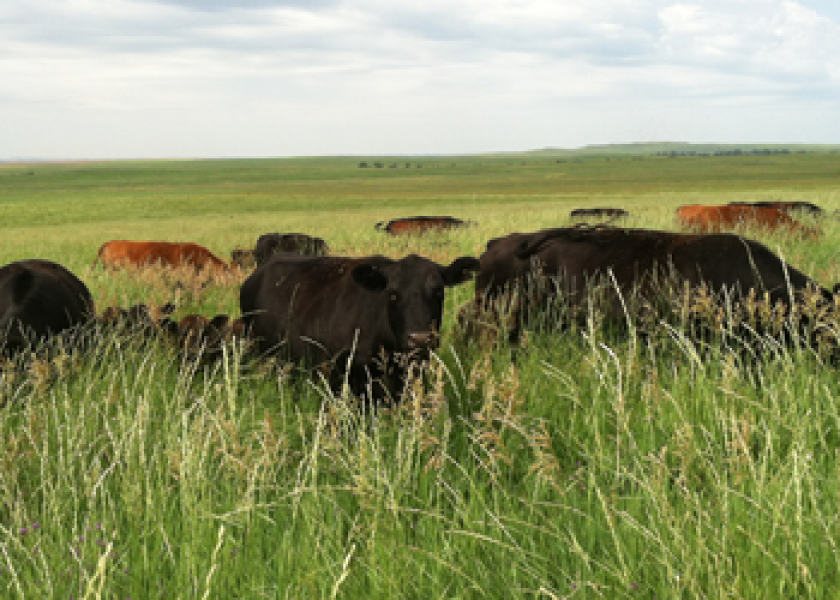Unintended Consequences: Managing Anaplasmosis in Cattle

The occurrence of anaplasmosis, which was once considered to only be problematic in the southern portion of the United States, has been shown to be more widespread. In fact, 40 of the 50 states have reported incidences of anaplasmosis. The most severe outbreaks of the disease can result in death losses in up to 20% to 40% of herds. Thus, cattle producers need to be aware of the causes, symptoms and prevention steps to help with mitigation of the disease.
Anaplasmosis is a bloodborne pathogen that results in the destruction of red blood cells by bacteria called Anaplasma marginale. Horn flies, stable flies, and mosquitos are often considered the primary vectors carrying the disease. The University of Illinois added ticks and cross-contamination of equipment that comes into contact with blood during processing or treating of infected animals to the list of primary vectors. Recently, many state and federal traceability studies have found vaccination needles contribute equally to the spread compared to external parasites. Additionally, ticks have garnered more focus as tick exposure is extended compared to that of flies. Although insects are a prevalent vector for the spread of the disease, face flies and other nonbiting insects do not contribute to the spread of anaplasmosis.
Once a cow contracts the A. marginale bacteria, it slowly begins to invade the animal’s red blood cells where its immune system recognizes and seeks to destroy the bacteria. While trying to eliminate the pathogen, the animal’s immune system inadvertently destroys the very thing it is trying to protect – red blood cells. Eventually, red blood cells are eliminated faster than the body can make them. A low red blood cell count can occur in two to six weeks post-infection, leading infected animals to become anemic and unable to transport crucial nutrients throughout the body. It’s important to note that an animal’s age may affect their ability to combat the disease, as the ability to refresh red blood cell supply slows with aging, thus increasing the animal’s likelihood of succumbing to the disease. Industry data indicates that roughly 40% of animals over age three will not survive without preventive or intervening treatment.
Symptoms of anaplasmosis can vary amongst animals. Initially, animals may look weak, have a loss of appetite, contract a fever and/or become lethargic. Some may also have a change in complexion with the exposed skin around the eyes, nose and teats becoming pale. Prolonged or acute exposure can result in behavioral changes, such as becoming aggressive or agitated, in addition to heavy breathing, yellowing of the skin and rapid weight loss. Younger animals, however, are less likely to exhibit these severe symptoms as their bodies are able to replenish red blood cells more rapidly.
Animals showing signs of anaplasmosis should be treated as soon as possible. Cattle producers should consult with their veterinarian regarding proper diagnosis and treatment of animals suspected of the disease. A veterinarian may prescribe a pharmaceutical product such as chlortetracycline (CTC), which requires a veterinary feed directive (VFD) to the producer and feed supplier and can be incorporated into minerals fed on pasture.
The potential for significant economic losses makes anaplasmosis prevention a crucial aspect of herd health management. Implementing an Integrated Pest Management (IPM) program can reduce the probability of potential spread from biting insects. There are many products on the market to combat pests, including fly tags, pour-ons, rubs, feed-through pesticides, topical and feed-through repellants, and more. An IPM program combines these technologies with management practices like rotational grazing, burning and grazing exclusions for greater efficacy. For example, fly tags help dispel the immediate pressure, the feed-through pesticide prevents the next generation of flies from developing, CTC delivers a remedy for animals that may be infected, and rotational grazing assists in preventing harborage from overgrowth on some pastures.
More producers are opting to use combination strategies to relieve fly pressure on their herds. A strategy that is gaining popularity is using feed-through pesticides in combination with garlic derivatives. This combination mitigates the current fly pressure while allowing time for the pesticide products to reduce the insect population. Additionally, producers have observed fewer ticks on cattle when using garlic additives.
Research demonstrates the science behind usage of garlic repellents. In a two-year study conducted in Canada by Durunna and Lardner (2020), horn fly numbers were reduced by nearly 50% on cattle offered a free choice 2% garlic-infused salt, compared with an untreated group1. Many other studies are looking at the impact of garlic and its derivatives on other pests, not only in cattle but across production and leisure species.
Regardless of which mitigation strategy is utilized, producers must have a strong collaborative working relationship with their veterinarian, nutritionist and feed/mineral supplier to ensure the necessary pest management activities are in place to prevent significant losses when cattle are turned out to pasture.
References
1Durunna, O., and Lardner, H. (2020). Impact of Garlic-infused Salt Supplement on Fly Abundance, Salt Intake, and Defensive Behaviors in Grazing Beef Cows. Sustainable Agriculture Research. 10(1):54
Author Bio:
Chris Hagedorn is the Ruminant Business Manager for ADM’s North American animal nutrition business. He has been with ADM for over 10 years and has experience in livestock management, business planning and management, agribusiness, and plant management within the production industry. He earned a Bachelor of Science degree focused on Animal Sciences - Nutrition and Management from University of Nebraska-Lincoln.







